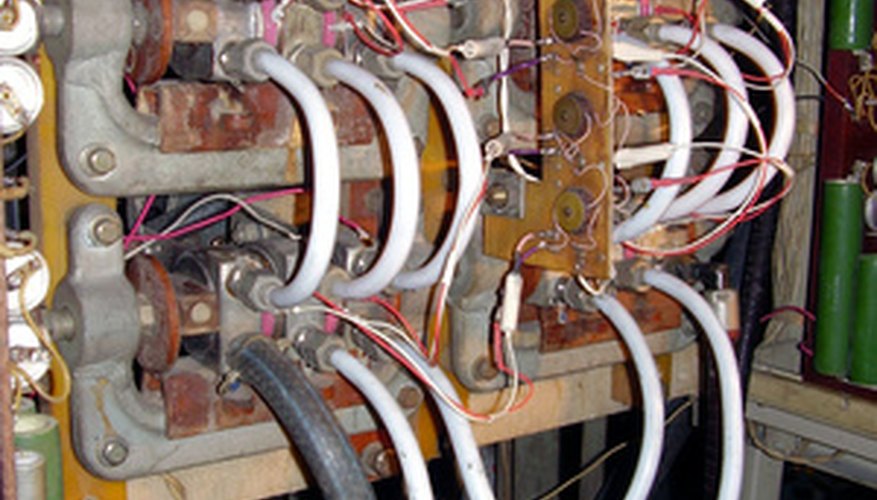When calculating the size of a bundle of wires, you are looking to calculate the diameter of the bundle more than anything else. This calculation will help you decide where the cable can fit or what kind of hole needs to be drilled to accommodate the wires. Once assembled, calculating the diameter might be as easy as measuring it; however, if you need an estimate diameter before the wires are assembled, then you have to use a more involved technique.
- When calculating the size of a bundle of wires, you are looking to calculate the diameter of the bundle more than anything else.
Measure or reference the diameter of one of the wires. This measurement will probably be in millimetres.
Calculate the cross-section area of that one wire using the area formula for a circle, i.e., area equals the square of the diameter multiplied by 3.14 (pi) divided by four. As an example, a 2mm wire would have an area of 3.14 square mm because 2 x 2 x 3.14 divided by 4 = 3.14.
Count the number of wires in the bundle.
Multiply the number of wires by the area of one wire. This will give you the total area. To continue the example, suppose you had 30 same-size wires. The total area would be 94.2 square mm. Note that this procedure assumes all wires are of equal size. If they are not, you would simply follow the area calculations for each size of wire, i.e., calculate one wire's area and multiply it by the number of equal-sized wires. Finally, you would add all the areas together to compute the total area.
- Count the number of wires in the bundle.
- If they are not, you would simply follow the area calculations for each size of wire, i.e., calculate one wire's area and multiply it by the number of equal-sized wires.
Calculate the diameter of the bundle by using the same area formula, modified to solve for diameter: Diameter = square root (4* area / 3.14)
In the example:
Diameter = square root (4* 94.2 / 3.14)
Diameter = square root (120)
Diameter = 10.95mm
